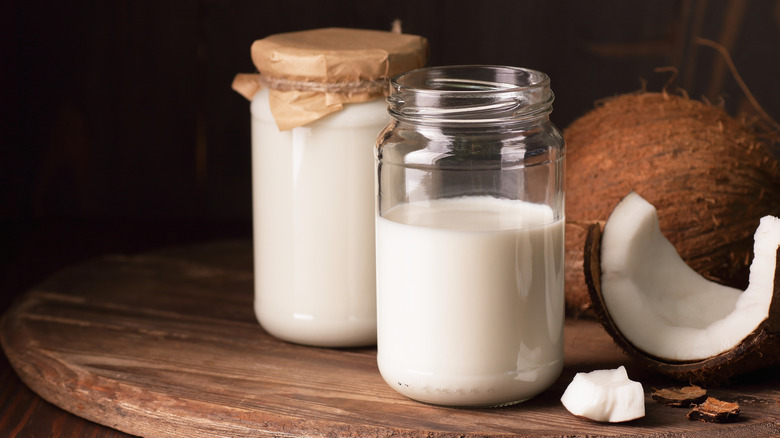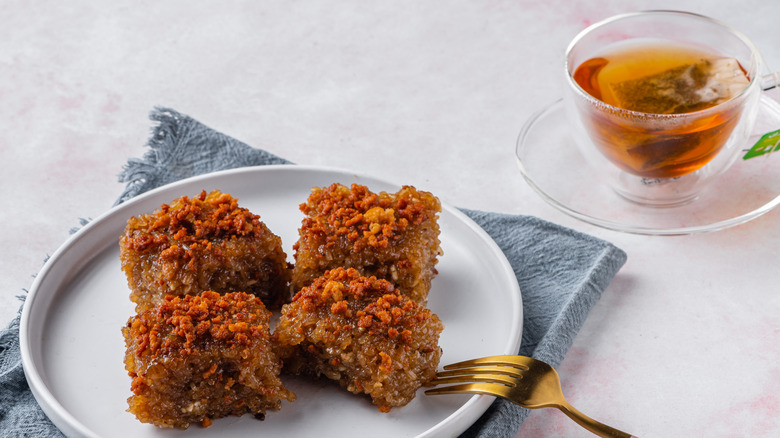Cook Down Coconut Cream And Magically Get 2 Ingredients Out Of It
Coconut cream is essentially the same thing as coconut milk: it's the white flesh of the coconut blended with water and strained — but the cream has less water than the milk. You'd probably recognize it as the rich cream that floats on top when a can of coconut milk separates. While it's a fantastic ingredient for thickening up delicious meals in something like a Swiss chard coconut curry, when cooked down, it'll slowly separate into two completely different ones. One is a staple ingredient across many households: coconut oil. This is an extremely versatile and stable oil, with a high smoke point, great for frying (and especially deep frying).
But it's what separates from the oil that is really special — a crispy, crunchy garnish for your favorite desserts. Coconut curds get lovely and toasted during the cooking process, and they're known as latik in Tagalog. These crunchy nuggets of golden brown are sweet and nutty in flavor and make for a wonderful topping to just about anything. Try them on desserts such as biko (a traditional sticky rice cake), some beef jerky skewers, or some luscious no-bake Filipino milk candy.
How to cook it down and store it
This recipe might just be the easiest you've ever followed. Simply decant the contents of a can of coconut cream into a pot, and get it on medium-high heat until it begins to boil — you'll see a lot of steam coming off the top, but keep going once it stops. That just means that all the water will have evaporated away, which is exactly what you want.
At this point, you'll begin to see the remaining liquid separate into a clear oil (that's the coconut oil), and a residue that will collect on the bottom of the pan. That's what will eventually become your latik. Feel free to stir it with a wooden spoon every so often just to stop it from sticking to the bottom of your pot and burning. Keep cooking it down until that residue turns a beautiful golden brown color. That's how you'll ensure it takes on that characteristic nuttiness.
Finally, grab a strainer (preferably a fine mesh sieve, so you don't lose any stray bits of latik) and pass everything through it. You'll be left with a delicious homemade coconut oil that will solidify at room temperature and can be stored (in an airtight jar somewhere cool and dark) for up to ten months. Homemade latik can be kept at room temperature for a couple of days (or frozen for later use) — but good luck on making it last that long.


